Life in the city has returned to normal, three years after it was hit by the disease, CUI JIA and LIU KUN report from Wuhan
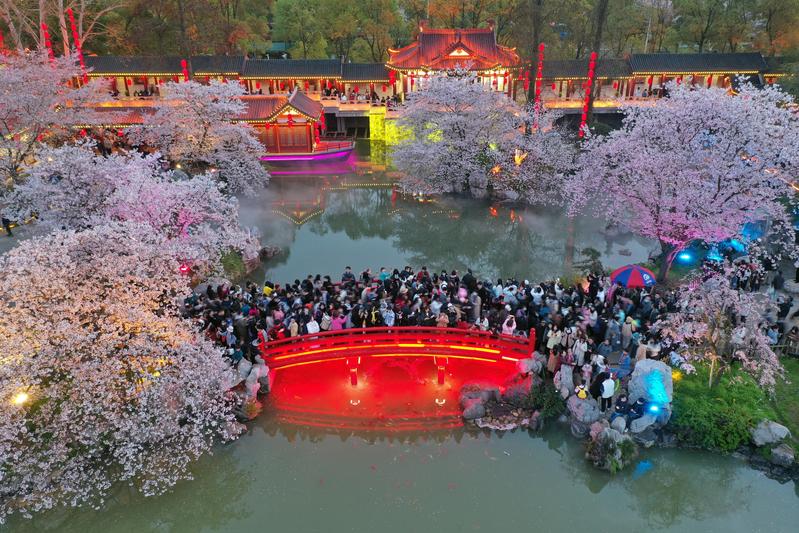 Visitors enjoy the blossom at the East Lake Cherry Garden on March 25. (JIAO XIAOXIANG / FOR CHINA DAILY)
Visitors enjoy the blossom at the East Lake Cherry Garden on March 25. (JIAO XIAOXIANG / FOR CHINA DAILY)
On a Saturday morning at the end of February, the indoor training facility at Wuhan Sports Center was packed with people playing badminton. The air was filled with the sounds of rackets hitting shuttlecocks, sneakers thumping on the courts and cheers for teammates.
Three years ago, this sports center in Wuhan, capital of Hubei province, was packed with COVID-19 patients and medical workers wearing white protective suits. The medical teams were sent from Jiangsu, Guizhou and Anhui provinces to aid the city after the training facility and the indoor stadium next door were turned into one of China's first makeshift hospitals — in just 72 hours — to contain the COVID-19 outbreak.
Back then, people called these makeshift hospitals "Noah's Ark "as the virus spread rapidly around Wuhan, a city with a population of about 13.65 million, and there were not enough medical resources, especially hospital beds, to meet the demand.
Zhao Shaodong, a coach at the sports center, said that some of the regulars have a special connection for the facility because they recovered there after contracting the infection. In total, 1,056 patients were treated at the facility, which was one of the largest makeshift COVID-19 hospitals in Wuhan.
"During breaks, they often show people pictures of what the facility was like when it was a makeshift hospital, and point out where their beds once were. Now that they are back and enjoying life, I believe both the Wuhan people and the city have stepped out of the shadows of the COVID-19 epidemic," Zhao said.
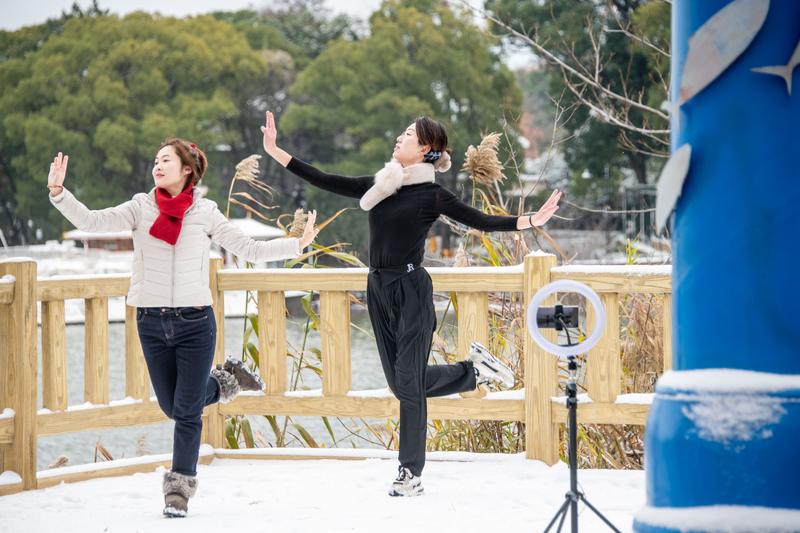 Visitors make videos near East Lake in Wuhan, capital of Hubei province, on Jan 15. (PHOTO / XINHUA)
Visitors make videos near East Lake in Wuhan, capital of Hubei province, on Jan 15. (PHOTO / XINHUA)
Wuhan detected its first case of novel coronavirus at the end of 2019, and the fatality rate was relatively high at the beginning of 2020 in the central Chinese city.
By then, the country had implemented a series of unprecedented measures in the city to contain the outbreak and save lives. More than three years later, Wuhan has pulled through and people's lives have returned to the pre-epidemic state.
The city's medical workers and residents have said that the Feb 23 announcement by the national health authorities that the COVID-19 epidemic had "basically" ended was like a reward for them, while the memories of how they battled the epidemic during its most deadly phase will never fade.
 Tourists pass by a 3D screen in Jianghan district, Wuhan, capital of Hubei province, in February. (ZHU XINGXIN / CHINA DAILY)
Tourists pass by a 3D screen in Jianghan district, Wuhan, capital of Hubei province, in February. (ZHU XINGXIN / CHINA DAILY)
Tough times
Wen Danning, head of the infectious diseases department at Wuhan Jinyintan Hospital, said even when the number of patients being treated for pneumonia of an unknown cause started rising in early January 2020, she didn't realize that a pandemic would soon begin, changing people's lives worldwide.
Specializing in infectious diseases, Jinyintan was one of the first hospitals in Wuhan and the world to treat patients with this pneumonia, including those with severe symptoms.
It quickly turned out that the infections were caused by the novel coronavirus, which could be transmitted from human to human. "Dealing with a new disease that even didn't have a name, the medical workers were gripped by a feeling of panic at the beginning," Wen said.
On Feb 11, 2020, the disease caused by the virus was named COVID-19 by the World Health Organization.
Soon, medical experts from all over China arrived at the hospital to study the disease.
Based on their experience of treating viral pneumonia, the team quickly drafted the first guidance on diagnosing and treating the disease. Since then, China has published 10 versions of the guidance.
"China's quick response to gain insights into COVID-19 in Wuhan laid a solid foundation for the country and the world to introduce measures to contain the spread of the virus and save lives," Wen said.
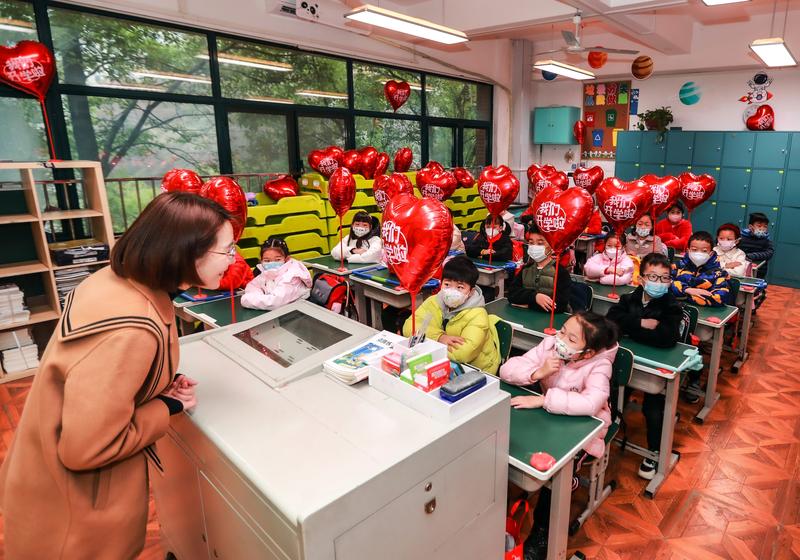 Students take a class at a primary school in Wuhan in February. (ZHAO JUN / FOR CHINA DAILY)
Students take a class at a primary school in Wuhan in February. (ZHAO JUN / FOR CHINA DAILY)
In addition to putting enormous pressure on local medical workers, the sudden outbreak became a grave test for both the city and its people as the original strain of the virus started to spread among communities, and the fatality rate was relatively high.
Memories of the period from late January to mid-February 2020 are terrifying for local people. When he was interviewed by China Daily in April 2020, Zhang Dingyu, former head of Jinyintan, said people were worried about a shortage of medical resources and whether they would be treated if they fell ill.
Walking in the outpatients' reception hall at Wuhan Hankou Hospital, Zhao Hua, who worked as a doctor in the department, recalled the scene about three years ago.
Zhao said the hospital received orders to transform itself into a designated facility for COVID-19 patients at 4 pm on Jan 20, 2020. At 9 pm, as soon as things were ready to admit patients, the fever clinic quickly filled with people with symptoms.
The hospital then opened the outpatients' reception hall and the emergency department to cope with the rising number of patients.
"The outpatient's reception hall was packed with people. There was not even time for medical workers to worry about getting infected — all we could think about was to see as many patients as possible. The outbreak hit Wuhan so suddenly and fiercely. However, we soon got the help we desperately needed," Zhao said.
To help the overstretched medical workers and resources, the central government decided to send medical teams from other provinces and regions to the city. The first batch arrived on Jan 24, 2020. About 40,000 medical workers volunteered to come and aid the city, which was seen as the main battlefield in China's war on COVID-19.
 People read at the Hubei Province Library in February. (ZHU XINGXIN / CHINA DAILY)
People read at the Hubei Province Library in February. (ZHU XINGXIN / CHINA DAILY)
What's more, to contain the outbreak, the central government made the unprecedented decision to put Wuhan under lockdown from Jan 23, 2020. On April 8, the 76-day lockdown was lifted after the initial outbreak was brought under control.
"Looking back, if there had been any slight hesitation in implementing those measures, the country would have faced irretrievable losses. The development of the epidemic would have been like seeing a drop of ink expanding in all directions in water. It would have gotten out of control," Zhao said.
During the lockdown, all transportation links from Wuhan to the outside world were suspended and people were ordered to stay home to stop the virus from spreading. It may seem a brief period now, but the people of Wuhan had no idea how long the situation would last or when the outbreak would be contained.
"The epidemic drew global attention to Wuhan and its people. Without the full cooperation of the Wuhan people, I think the first round of the outbreak would have lasted much longer," Zhao said.
Xiao Bang, a local resident, said that he was deeply worried in 2020 when he heard that the epidemic had plunged the city into "a state of war".
"Wuhan people fully complied with the epidemic control measures, which were all new to us. At that time, every person was a soldier in the war to contain the epidemic. We fought hard. Even by staying home, we bought valuable time for those measures to take effect," Xiao said.
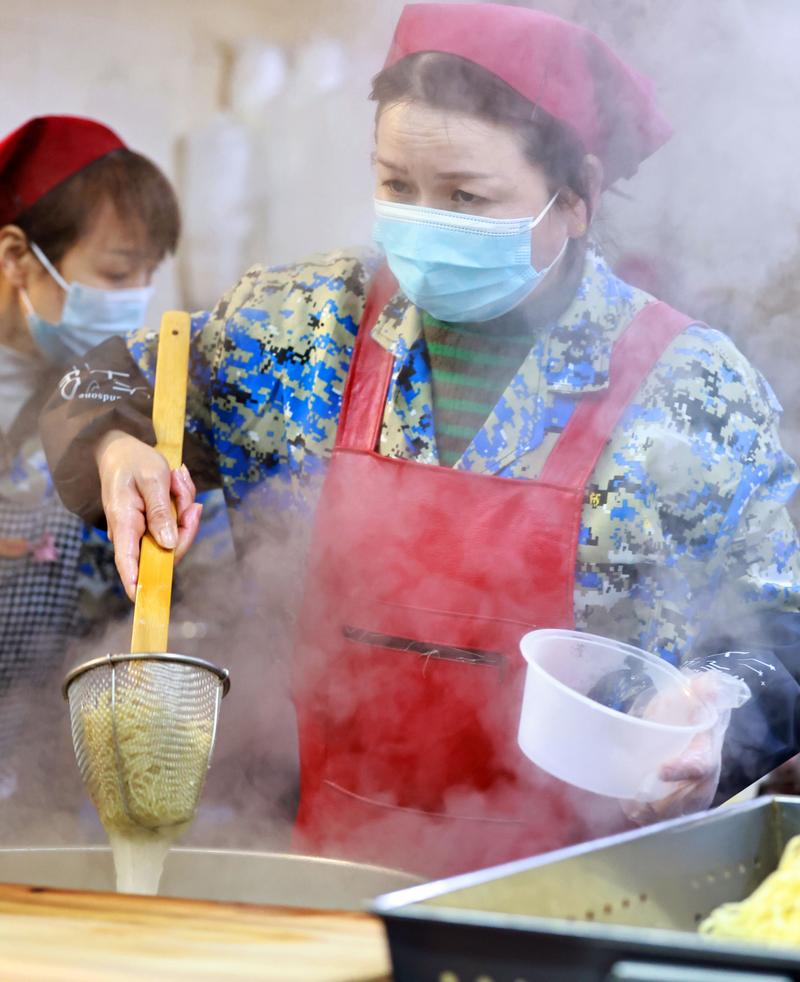 A restaurant owner makes reganmian (hot and dry noodles) in Wuhan's Liangdao street in February. (ZHU XINGXIN / CHINA DAILY)
A restaurant owner makes reganmian (hot and dry noodles) in Wuhan's Liangdao street in February. (ZHU XINGXIN / CHINA DAILY)
During the lockdown, many Wuhan people became volunteers in their communities, delivering daily necessities to residents or driving medical professionals to work. Xiao volunteered to guard the entrance to a community in central Wuhan near Huanghelou, or the Yellow Crane Tower, a famous landmark.
"Barely a car or pedestrian passed by Pengliuyang road in front of the entrance, which was always busy and noisy. I had never seen anything like it," he recalled.
On a Saturday afternoon in late February, Xiao returned to the community. Heavy traffic meant it took him quite a while to find a parking space and cross Pengliuyang road.
"To be honest, Wuhan people are happy to see traffic jams now, because they show that the city has regained its vitality and glamour," he said.
As time goes by, the strains of COVID-19 have become increasingly contagious, more capable of developing immunity to treatment, but at the same time less deadly. On Jan 8, China downgraded its management of COVID-19 from a class A to a class B disease.
On Feb 23, the health authorities said the country's COVID-19 epidemic had "basically" ended. "The news was particularly significant for Wuhan people, who fought the toughest battle in the epidemic and won," said Zhao, from Wuhan Hankou Hospital.
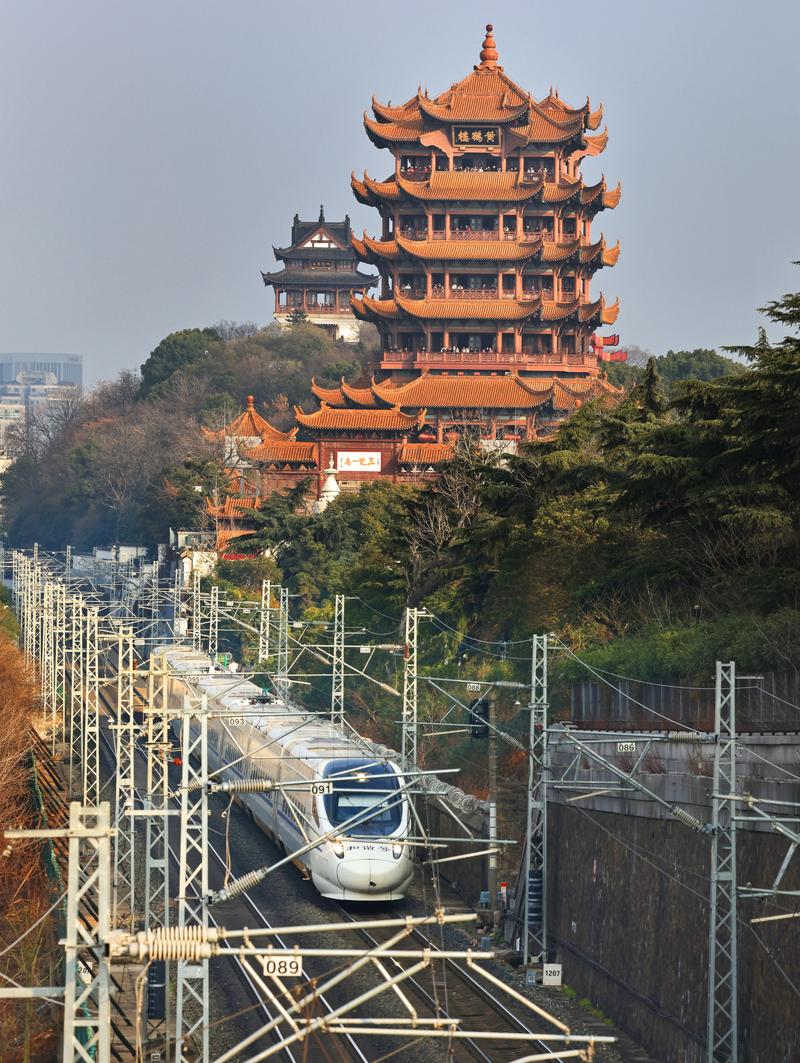 A high-speed train passes the Yellow Crane Tower in Wuhan in February. (ZHU XINGXIN / CHINA DAILY)
A high-speed train passes the Yellow Crane Tower in Wuhan in February. (ZHU XINGXIN / CHINA DAILY)
Changing situation
On April 26, 2020, the last four COVID-19 patients at the Renmin Hospital of Wuhan University (Hubei General Hospital) were discharged.
As the doctor in charge, Hu Ke, director of the second department of respiratory and critical care medicine, remembers the date clearly.
On the same day, the number of COVID-19 patients in hospitals across Wuhan hit zero. By April 16, 2020, only 50,333 people had been infected in the city and the death toll stood at 3,869.
"The experience gained in epidemic control in Wuhan is extremely valuable," Hu said.
"We proved that by quickly isolating patients and making sure they could all receive treatment in hospitals or makeshift hospitals, the COVID-19 epidemic could be contained in a short period of time."
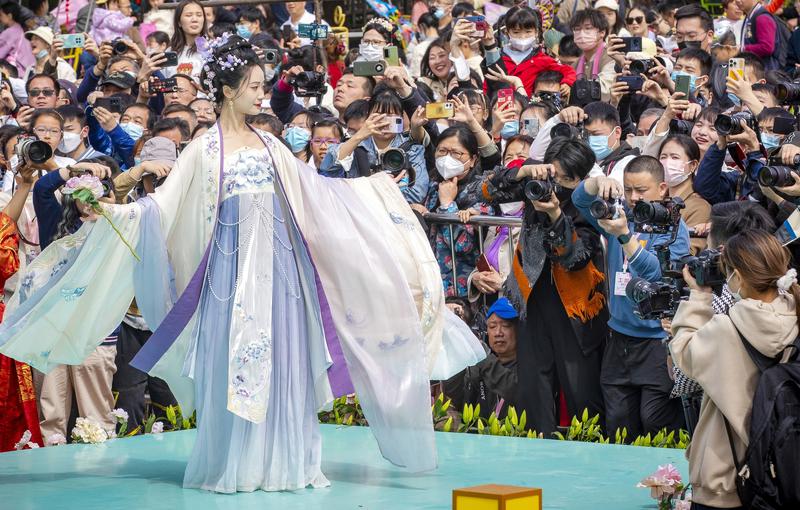 People take photos of a woman dressed in hanfu (traditional Han costume) on a tourist street in Wuhan in February. (CHEN LIANG / FOR CHINA DAILY)
People take photos of a woman dressed in hanfu (traditional Han costume) on a tourist street in Wuhan in February. (CHEN LIANG / FOR CHINA DAILY)
As an expert in COVID-19 epidemic control, Hu has been to other parts of the country to assist local medical workers in dealing with COVID-19 outbreaks during the past three years.
"When medical workers hear that I am from Wuhan, they always show great respect because they know that I have dealt with the deadliest strain of the virus, and how hard it was. My experience is greatly valued," Hu said.
Wen, from Jinyintan Hospital, said the research on the virus carried out in Wuhan enabled China and the world to quickly develop testing kits and vaccines. She added that research on COVID-19 started at the hospital as soon as the outbreak began spreading in 2020. Several vaccines and medicines targeting COVID-19 in China have been developed, based on the hospital's data and research.
"More importantly, we are always willing to share the findings of the research and our experience with other hospitals around the world because COVID-19 is the common enemy of mankind," she said.
 Students play soccer at the Wuhan Sports Center in February. (ZHU XINGXIN / CHINA DAILY)
Students play soccer at the Wuhan Sports Center in February. (ZHU XINGXIN / CHINA DAILY)
A special award
In September 2020, Zhang, former head of Jinyintan and now deputy head of the Hubei Health Commission, received the national honorary title "People's Hero" for his outstanding contribution to the fight against the COVID-19 epidemic.
A photo of Zhang shaking hands with President Xi Jinping when he received the title is displayed at the entrance to the hospital's administration building. Wen said: "After passing the test of containing the COVID-19 epidemic, I believe we would act more calmly and be better prepared if a similar public health incident happened again. More importantly, medical resources at hospitals in Wuhan were boosted during the epidemic."
At Jinyintan, construction of two new buildings is almost complete. One of them will be dedicated to conducting research on infectious diseases, and the other will be an emergency response building that will provide routine healthcare, but can quickly be transformed into facilities to handle any sudden epidemics in the future, Wen said.
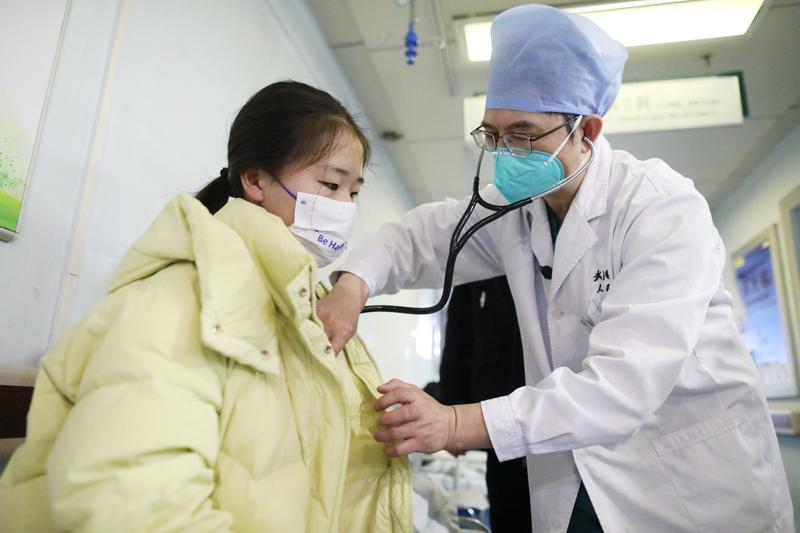 Hu Ke (right) checks a patient at Wuhan University People's Hospital in February. (ZHU XINGXIN / CHINA DAILY)
Hu Ke (right) checks a patient at Wuhan University People's Hospital in February. (ZHU XINGXIN / CHINA DAILY)
The hospital had only treated COVID-19 patients for the past three years, but in February, all general healthcare services fully resumed and the newly renovated outpatients' building was also put into use.
"The resumption of other healthcare services is quite significant for the hospital and the city because it shows that our lives are returning to normal," Wen said while inspecting the fever clinic and a number of patients.
A similar emergency response building is under construction at Wuhan Hankou Hospital. It will be equipped with standardized isolation wards that can deal with patients who have infectious diseases.
"You can see such buildings being built in many hospitals in Wuhan because in the past three years, the central government has attached great importance to boosting the infrastructure and improving the emergency response system to handle public health emergencies in the city," Zhao, from the hospital, said.
Wu Zhifeng, president of the Wuhan Sports Center, said the folding beds used at the makeshift hospitals are kept in storage nearby. "If there was a need to transform the stadium into a makeshift hospital in the future, I believe that we would be able to do it faster and more calmly."
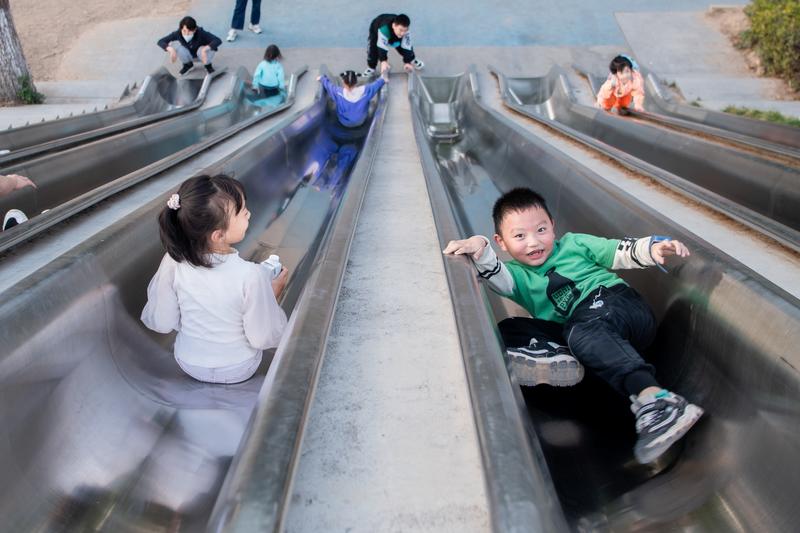 Children have fun at a games center built on an old industrial park in Wuhan in November. (PHOTO / XINHUA)
Children have fun at a games center built on an old industrial park in Wuhan in November. (PHOTO / XINHUA)
A new era
Xiao, the Wuhan resident, said his fear of the virus eased when he saw how the makeshift hospitals were quickly erected and medics started arriving from other parts of the country. "The Wuhan people really appreciated all the help we received at the time. We will never forget that, even when the epidemic is fully over," he said.
The last medical team that came to aid Wuhan left the city on April 15, 2020, marking a new phase of epidemic control in the city. Many people gathered along the roads to see the team off. They held banners that read, "Thanks for risking your lives to save ours."
Since 2021, the Wuhan government has been inviting medical workers who aided the city to return and see the beautiful springtime cherry blossoms, which are famous across China. They were unable to enjoy them in 2020 because of the strict epidemic control measures.
 A patient checks his results at Jinyintan Hospital in Wuhan in February. (ZHU XINGXIN / CHINA DAILY)
A patient checks his results at Jinyintan Hospital in Wuhan in February. (ZHU XINGXIN / CHINA DAILY)
This year, more than 16,000 medical workers have been invited back to the city. Once again, they received a warm welcome. On March 18, a special viewing session was arranged for them for the third year running at Wuhan University, one of the most popular spots to see the cherry blossoms in the city.
Zhao, from Wuhan Hankou Hospital, said that in addition to the help provided by medical workers, Wuhan people will remember the support of those in other parts of the country. "We received many messages from people around China, offering encouragement and giving us strength during the most difficult times. Such emotional support was priceless," she said.
"Wuhan people are very tough. We fought the epidemic hard, and now we are playing hard. I had to abandon a plan to visit the East Lake last weekend because the traffic jam there was scary. Don't get me wrong: I am not complaining — I am glad to see that Wuhan has recovered so well and that people are enjoying their lives."
Contact the writers at cuijia@chinadaily.com.cn



